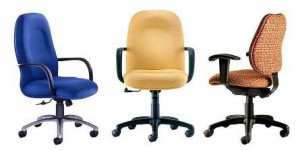 Anyone who has put together a meeting, seminar or dinner knows that seating setup is one of the key parts of how successful the event will run. Put the head table in front of the doors leading into the room and everyone will be distracted when latecomers arrive. While there are lots of guides to the various types of seating, http://bit.ly/1fx6D1Bthere are almost no lists to tell what to avoid and what works in reality.
Anyone who has put together a meeting, seminar or dinner knows that seating setup is one of the key parts of how successful the event will run. Put the head table in front of the doors leading into the room and everyone will be distracted when latecomers arrive. While there are lots of guides to the various types of seating, http://bit.ly/1fx6D1Bthere are almost no lists to tell what to avoid and what works in reality.
Here is a list of dos and don’ts when it comes to event seating:
* Do leave a center aisle and side aisles when doing theatre-style seating. People will be late, have to take a call or need to stretch their legs. Make it convenient for them to do so to minimize disruptions when the meeting is going on.
* Don’t put chairs right next to each other (nor lock them together) in a row when doing theatre-style seating. Conference chairs are rarely large enough to comfortably fit the rears of today’s attendees. Doing this kind of seating will mean that people will sit every other seat or stand in the back rather than be hip to hip in that kind of seating.
* Do block the back rows prior to the meeting beginning. People choose to sit in the back when there is plenty of seating available (ever watch how church pews fill up during a Sunday service?). By blocking the back rows, you force people to fill in the seating closer to the front and hence closer to the speakers. This is also true for rounds used either for a meeting or dinner as well. Just mark the table as reserved or don’t put chairs out until you need them.
* Don’t place two seats at the corner of u-shaped seating. This forces both occupants to fight for the same space to put their materials or food. Instead, pick one side or the other when placing seats at the u-shaped corners. Then space appropriately on the adjacent table to keep space clear for all occupants.
* Do set limits on the number seats per table when doing classroom style. Either do two seats per 6 ft length table or three seats per 8’ length table. This gives everyone room to sit and set up laptops and/or meeting materials without bumping into their table neighbor. More importantly, it reduces the chances that someone is seating where the table legs are making it unable for the participant to stretch out his legs.
* Don’t put chairs around the entire round table if you are having a program. Doing that inevitably makes it so that half of each table can not see the dais or the speaker or what is going on in the front of the room. Instead, set only half the table facing the when the program will be presented. Or use half rounds to so you will not have wasted meeting space.
* Do set up comfortable seating when doing rounds. Since most dinner events are held around a round table, avoid trying to cram as many seats as possible. People are there for social reasons and want to be comfortable while they eat, not bumping elbows trying to drink their coffee or cut their meat/fish. Usually 8 seats per 3 ft rounds works well (not the traditional 10 seats).
* Don’t create a seating set up that invites the speaker to move “into” the seating to connect with the audience. Many meetings using either theatre or classroom- style seating can be so massive in length and width that the presenter starts moving down the center aisle to connect with everyone in the audience. This leaves those in the front and front sides with a nice view of the speaker’s back. If you are going to these many seats, it is time to get a camera and screens on either side of the room to help everyone see (even in the back) what the speaker is doing while they hear his words.
That is a list of dos and don’ts that have become evident over time. What suggestions would you add? Send them to solutions@non-profithelp.com so we can do a follow up post. Or put them in the comment section which follows this posting.
Remember, there are no hard and fast rules to good seating at events. The goal is to provide a superb experience for the attendee. Put yourself in his/her place when planning and you can usually eliminate most problems by sensible planning and set up.



